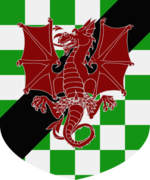Njombia: Difference between revisions
From Dragon Eye Atlas
No edit summary |
mNo edit summary |
||
| Line 16: | Line 16: | ||
While formally a monarchy, the tribal structures that dominate the area for millenia have not been entirely replaced. Family and clan memberships are important and the individual provinces of the realm are often inhabited by people forming a tribe or clan. They are not generally hostile to foreigners, but business and political relations are an order of magnitude more common among tribe members than with outsiders. | While formally a monarchy, the tribal structures that dominate the area for millenia have not been entirely replaced. Family and clan memberships are important and the individual provinces of the realm are often inhabited by people forming a tribe or clan. They are not generally hostile to foreigners, but business and political relations are an order of magnitude more common among tribe members than with outsiders. | ||
{{#widget: | {{#widget:Map|bounds=[[-21, 24.5], [-10.5, 41.5]]|show=realm|filter={{PAGENAME}}}} | ||
Revision as of 08:33, 2 November 2019
| Official Name | Kingdom of Njombia |
| Capital | Buikwiban |
| Government | Monarchy |
| Population | 2,711,000 |
| Dominant Race | human |
| Dominant Culture | Kiswaili |
| Dominant religion | Kiswaili Faith |
| Flag | 
|
Njombia is a tight-knit realm at the western coast of Auseka. It has its own religion and culture which has spread into Palan and Hanzatia, but in Njombia, all is one - politics, culture, faith.
Njombia has a bit of everything - it stretches through all climate zones that Auseka has to offer, it borders elven, dwarven and human realms, including the huge Vericum and the magic realm of Palan.
While formally a monarchy, the tribal structures that dominate the area for millenia have not been entirely replaced. Family and clan memberships are important and the individual provinces of the realm are often inhabited by people forming a tribe or clan. They are not generally hostile to foreigners, but business and political relations are an order of magnitude more common among tribe members than with outsiders.